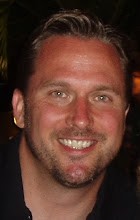Check out this story on the funding disparities driven by our current DOE formulas. We need to aggressively address these and other disparities if we truly want to address the achievement gaps in this country.
On a related note, it still breaks my heart that the wealthiest in our country still focus so much of their giving in support of the mega endowments such as Harvard's $30 Billion. There is no denying that those who need it the least, get it the most--money to support education that is.
Saturday, December 23, 2006
Friday, December 01, 2006
A Creative-Class Promised Land: The Kalamazoo Promise
 We’ve spent a good deal of time on this blog talking about changing and fast-intertwining economic and education dynamics. We’ve reviewed Thomas Friedman’s argument about the role of education in an increasingly “flat” world. We’ve also explored Richard Florida’s argument that the rise or flight of the creative class—dynamic, educated, and talented people staying or leaving—is either empowering or disabling communities. Here’s a stunning response from Kalamazoo, Michigan.
We’ve spent a good deal of time on this blog talking about changing and fast-intertwining economic and education dynamics. We’ve reviewed Thomas Friedman’s argument about the role of education in an increasingly “flat” world. We’ve also explored Richard Florida’s argument that the rise or flight of the creative class—dynamic, educated, and talented people staying or leaving—is either empowering or disabling communities. Here’s a stunning response from Kalamazoo, Michigan.The Kalamazoo Promise was announced last year and is now in full swing. Through the generosity of anonymous donors, the Kalamazoo Promise set up a permanent scholarship fund to pay for four years of college for any child who graduates from the Kalamazoo public schools. There is a sliding scale of support based on the number of years in the schools system, with a minimum of four years required. However, the promise is basically this: stay here or move here and your kids go to college for free. The promise supports up-to-four years of attendance at any of the states’ public community colleges or universities (or any combination thereof).
Prior to the announcement of this program, enrollment was sharply declining in Kalamazoo schools. The economic development outlook was bleak. Property tax revenue was in free fall. Now each of these indices is moving in the other direction. Folks have moved from as far away as Hawaii to locate in Kalamazoo and take advantage of this unique benefit. Enrollment is up, property values are up, and prospects are rising—all because of this unique investment in the creative capital of a community. Jamal Abdul Alim—who recently studied the impact of the program—describes it this way:
“The program is as much a social experiment aimed at leveling the playing field of access to higher learning as it is an economic development initiative meant to generate school revenue, boost the economy and reverse the effects of a middle-class flight.”
Initial estimates place the program cost between $3-5 million for the first few years. In peak years, it could cost more than $20 million. However, the donors have assured the community that there is enough money to support the program in perpetuity.
Looking at the road ahead, this may be the best money ever spent. For many families—as Abdul-Alim notes—Kalamazoo has just become “the promised land.”
Subscribe to:
Posts (Atom)
